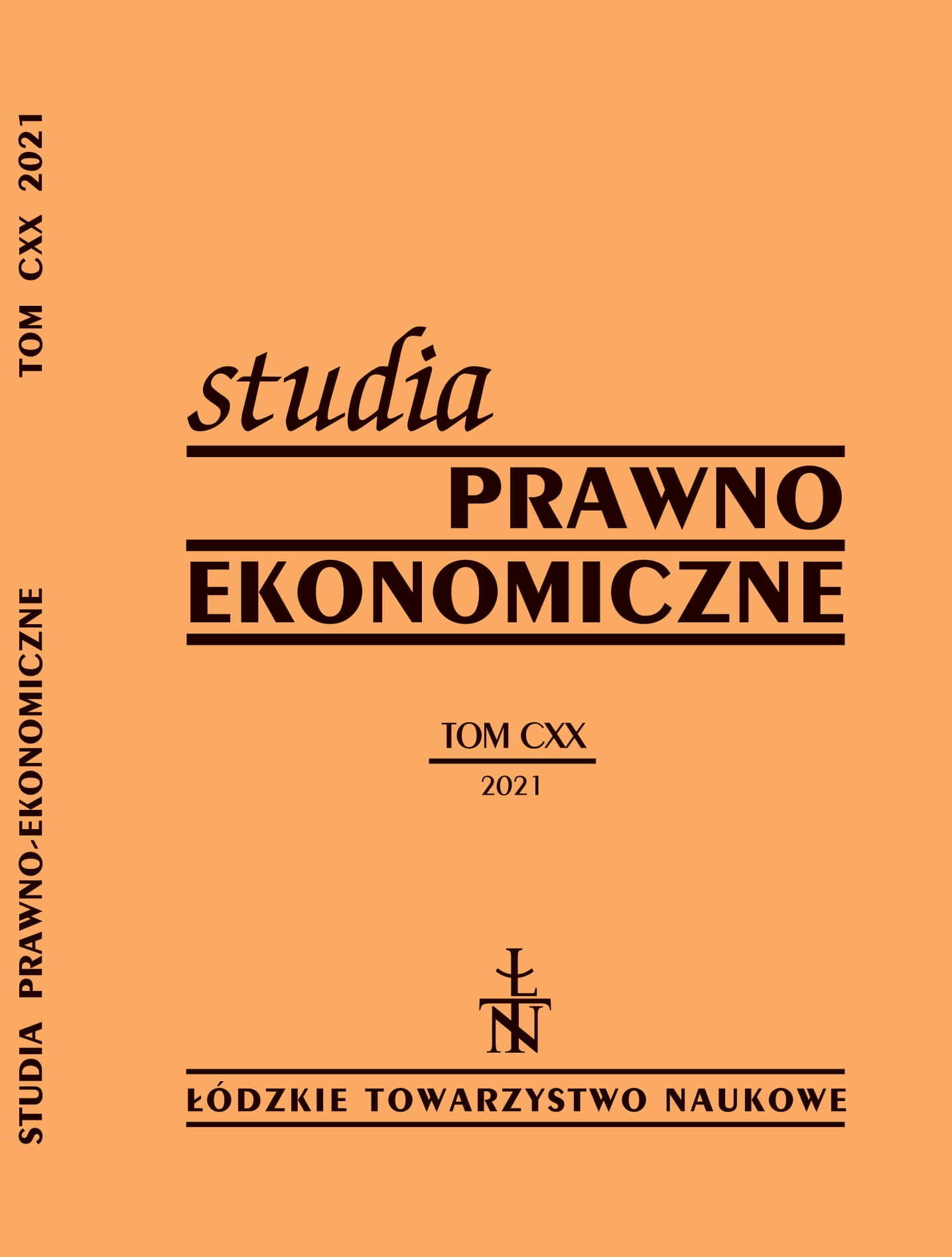The situation on the labor market and sickness absence: a cyclical and seasonal approach
DOI:
https://doi.org/10.26485/SPE/2021/120/11Keywords:
sickness absence, unemployment, business cycle, seasonality.Abstract
Background: The subject of the research is sickness absence which, apart from a person’s health, is also shaped by other individual and contextual factors, including the situation on the labor market.
Research purpose: The aim of the article is to present how the changeability of the unemployment rate affects the absenteeism behavior of employees in Poland. We focus on two time perspectives: long-term, taking into consideration cyclical fluctuations, and medium-term, taking into consideration seasonal fluctuations.
Methods: Statistical analyses were combined using data from two sources: information on sickness absence was obtained from the Social Insurance Institution (ZUS), and information on the unemployment rate was obtained from the Central Statistical Office (GUS).
Conclusions: Based on the results, it was possible to confirm the impact of cyclical unemployment on absenteeism behavior in Poland and also to determine several premises that may indirectly prove the impact of seasonal unemployment. We also found that in the case of seasonal fluctuations, the regularities that were previously confirmed for cyclical fluctuation do not work. First, the direction of the changes is reversed. While under the business cycle, sickness absence decreases as unemployment decreases, in the seasonal cycle, the opposite is true – it increases. Second, the change in the structure of absenteeism is different. While under the business cycle, the share of short-term layoffs decreases as unemployment increases, in the seasonal cycle, the opposite happens – it increases.
Downloads
References
Bockerman P., Laukkanen E., Predictors of sickness absence and presenteeism: Does the pattern differ by a respondent’s health?, Journal of Occupational and Environmental Medicine 2010/3 (52), s. 332–335.
Ichino A., Riphahn R.T., The effect of employment protection on worker effort: Absenteeism during and after probation, Journal of the European Economic Association 2005/1 (3).
Johansson P., Palme M., Moral hazard and sickness insurance, Journal of Public Economics 2005/9–10 (89), s. 120–143.
Kivimäki M., Vahtera J., Thomson L., Griffiths A., Cox T., Pentti J., Psychosocial factors predicting employee sickness absence during economic decline, Journal of Applied Psychology 1997/6 (82), s. 858.
Kozioł L., Muszyński Z., Kozioł M., Koncepcja systemu zarządzania absencją w przedsiębiorstwie, Zeszyty Naukowe Małopolskiej Wyższej Szkoły Ekonomicznej w Tarnowie 2016/3 (31), s. 37–53.
Kristensen T.R., Jensen S.M., Kreiner S., Mikkelsen S., Socioeconomic status and duration and pattern of sickness absence. A 1-year follow-up study of 2331 hospital employees, Social Science and Medicine 2010/10, s. 1–11.
Kusideł E., Striker M., Absencja chorobowa a bezrobocie na rynku pracy w Polsce, Polityka Społeczna 2016/8 (509), s. 6–10.
Leigh J.P., The effects of unemployment and the business cycle on absenteeism, Journal of Economics and Business 1985/2 (37), s. 159–170.
Marmot M., Feeney A., Shipley M., North F., Syme S.L., Sickness absence as a measure of health status and functioning: From the UK Whitehall II study, Journal of Epidemiology and Community Health 1995/2 (49), s. 124–130.
Martinez M.E., The calendar of epidemics: Seasonal cycles of infectious diseases, PLoS Pathogens 2018/11 (14), s. e1007327.
Melchior M., Niedhammer I., Berkman L.F., Goldberg M., Do psychosocial work factors and social relations exert independent effects on sickness absence? A six year prospective study of the GAZEL cohort, Journal of Epidemiology and Community Health 2003/4 (57), s. 285–293.
Melsom A.M., Mastekaasa A., Gender, occupational gender segregation and sickness absence: Longitudinal evidence, Acta Sociologica 2018/61 (3), s. 227–245.
Pichler S., Sickness absence, moral hazard, and the business cycle, Health Economics 2015/6 (24), s. 692–710.
Prins R., De Graaf A., Comparison of sickness absence in Belgian, German, and Dutch firms, British Journal of Industrial Medicine 1986/8 (43), s. 529–536.
Shapiro C., Stiglitz J.E., Equilibrium Unemployment as a Worker Discipline Device, The American Economic Review 1984/3 (74), s. 433–444.
Slowey M., Zubrzycki T., Living longer, learning longer – working longer? Implications for new workforce dynamics, Higher Education Research Centre, DCU, Dublin 2018.
Striker M., Absencja chorobowa pracowników, Wydawnictwo Uniwersytetu Łódzkiego, Łódź 2016.
Szubert Z., Sobala W., Absencja chorobowa w przedsiȩbiorstwie po restrukturyzacji, Medycyna Pracy 2003/(1) 54.
Taylor P., Personal Factors Associated with Sickness Absence. A Study 194 Men with Contrasting Sickness Absence Experience in a Refinery Population, British Journal of Industrial Medicine 1968/25 (2), s. 106–118.
Virtanen P., Nakari R., Ahonen H., Vahtera J., Pentti J., Locality and habitus: The origins of sickness absence practices, Social Science and Medicine 2000/1 (50), s. 27–39.
www.bdl.stat.gov.pl
www.psz.zus.pl
www.zus.pl/baza-wiedzy/statystyka



